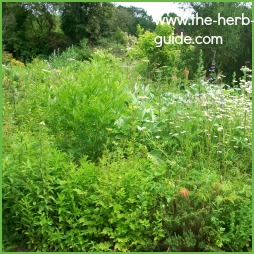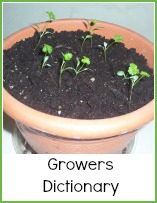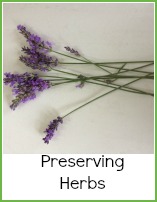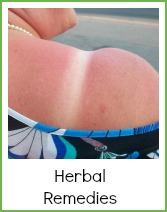Seasons
As an Amazon Associate I earn from qualifying purchases

Now if you’ve arrived here expecting to find seasons and Vivaldi or Frankie Valli – sorry, this is about growing plants and you’re at my herb website.
Hello.
OK – now through the site I refer often to spring, summer or fall when I’m talking about planting or harvesting.

You can try a sample lesson to help you decide if the Herbal Academy of New England is the right choice for you - follow the link below.
I live in the UK – Kent – the garden of England so they say.
It’s a nice county for the most part and the growing period is a bit longer than in the north of the country.
It's generally said that Spring progresses up the country at about a walking pace - I find that quite fascinating! So that's about 4 miles an hour.
Below, I’ve written a list of what we consider the months of the seasons are.
You’ll have to take into account whether you’re northern or southern hemisphere and how much closer to the equator you live.
This is a world wide web and so I have visitors from many countries at my herb (and my seafood) website – if you’re in a very sunny climate then you will probably never have to worry about frost damaging your plants, but you could have to guard against wind damage.
Basil for instance needs sun and shelter – protection from winds which dry out leaves whether you’re in Scotland or Italy – so the general growing guidelines stand but the planting and harvesting times may need to be amended.
The main reason that tender annuals (like basil) don’t get planted out until the end of spring/beginning of summer in the UK is that by then, the risk of frost at night will have diminished to the extent where it would be a rarity – although I do remember in 1976 – which was one of our hottest summers on record, snow stopped the cricket at Headingley in June – good old England…
For a very funny method of judging what's warm enough to plant seeds, read the call out box at the bottom (snigger) of this page!
Seasons - a rough guide
So – in my growing instructions, when I refer to a season, I mean the following as a general guideline.
Spring
March – early
April – mid
May – late
Summer
June – early
July – mid
August – late
Autumn (Fall)
September – early
October – mid
November – late
Winter
December – early
January – mid
February – late
Now these are just general guidelines that most people understand.
In reality, I find that March is as cold as winter – the thing with early spring though, is that it’s a time when the really keen gardeners get seeds sown indoors ready for planting out in later spring under protection.
Or indeed, plant outside under the protection of cloches or tunnels.
The seasons are never cut and dried in the UK – on a regular basis, we can have sun, rain, snow and wind all in one day.
But the ambient temperature of the air and ground is what matters here – you need days of good or bad weather to change the atmosphere or the temperature of the soil.
As a general guide, I always think that when the weeds start to grow in the garden, then it’s warm enough to start putting out hardy plants – probably with cloches to begin with if they’ve been grown indoors, but if it’s warm enough for the weeds, its warm enough for the broccoli ;-)
Likewise, at the end of the summer, the fine weather will often continue well into September - it’s a great bonus to be honest when it’s still hot enough to sit outside in Fall.
Of course though, the days are getting shorter – it gets dark earlier and so the plants are not growing but putting their effort into ripening – this is generally the time of harvest and into October for some plants.
If you have a fine, dry early to mid Fall (Autumn) it’s good for harvesting as you can leave things on the soil to dry out a little – no mud to knock off before you store them.
So – hope this clears up the seasons mystery – it is just a general guideline and you’ll have to adjust it according to your locality.
Any questions, then please contact me.
Growing Tip
Testing the temperature
I once read this in a gardening magazine - I can't remember which one, but it conjured up hilarious images in my mind.
Question: How can you tell when it's warm enough to plant seeds outdoors?
Answer: When you can sit your bare bottom on the ground.
Now, was this a literal test, in that gardeners all around the world were dropping their pants and sitting on the soil, or was it a touch of the hand and a question posed 'H'm... now would I like to sit my bare bottom on that soil?'
My mind was filled with images of allotment sites, where they drew lots every time as to who was going to test the soil and all gathered round wrapped in their winter woolies for the verdict, or dozens of people all sitting bare bottomed on the ground.
Where would you like to go next?
I may receive a commission if you purchase something mentioned in this post. See more details here This will not affect the amount you pay.




